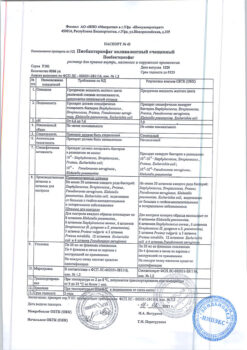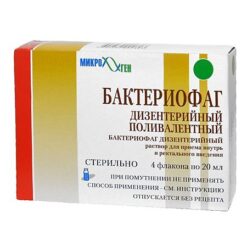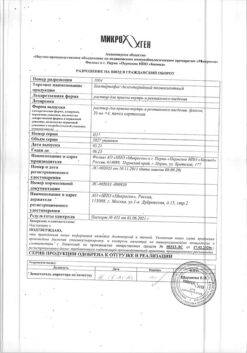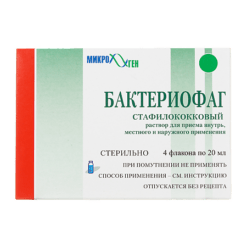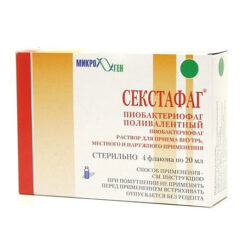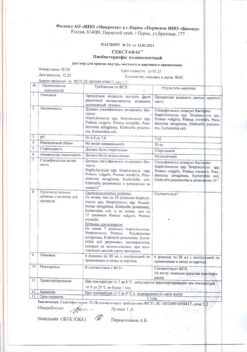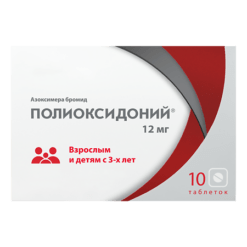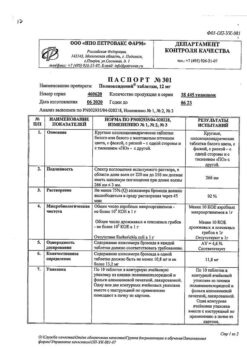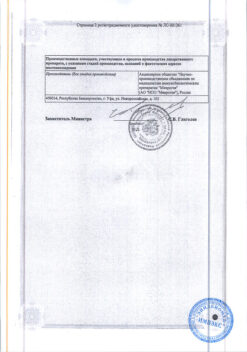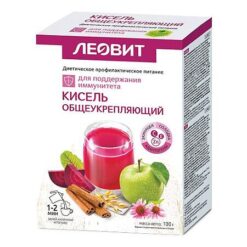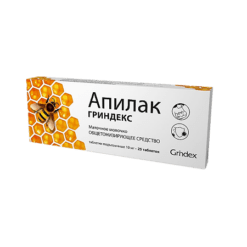No products in the cart.
Ilcyra, 180 mg/ml 0.9 ml syringes2 pcs
€1.00
Out of stock
(E-mail when Stock is available)
Description
Levilimab is a recombinant human monoclonal antibody to interleukin-6 receptor (IL-6). Levilimab binds to and blocks both soluble (rILR) and membrane-bound IL-6 receptors (mIL6R).
Blocking both forms of the receptor prevents the development of an IL-6-associated proinflammatory cascade, including the prevention of activation of antigen-presenting cells, B- and T-lymphocytes, monocytes and macrophages, endothelial cells and fibroblasts, and excessive production of other proinflammatory cytokines.
IL-6 is involved in the activation and maintenance of local inflammatory reactions (pannus formation in the synovium, stimulation of osteoclastogenesis – cartilage erosion, osteoporosis), in addition IL-6 is the only cytokine that directly induces the synthesis of acute-phase proteins in hepatocytes: CRP, fibrinogen, serum amyloid protein A – SAA, hipsidine, leptin.
The specific anti-inflammatory activity of levilimab has been demonstrated in in vitro and in vivo tests. Levilimab has an antiproliferative effect on DS-1 cell culture, causing dose-dependent inhibition of cell growth.
In a model of collagen-induced arthritis in Javanese macaques (Masasa fascicularis), repeated (once a week for 7 weeks) subcutaneous injection of levilimab is accompanied by a decrease in the severity of the inflammatory reaction in the joints, which was confirmed by histological examination (significant reduction in the severity of inflammatory and degenerative changes in cartilage tissue).
. In addition IL-6 is a key cytokine in the development of massive cytokine release (“cytokine storm”) in patients receiving immunosuppressive therapy including depletion agents (in particular monoclonal antibodies to T- and B-lymphocyte receptors) and in the formation of acute respiratory distress syndrome in severe infectious diseases, including patients with COVID-19.
Dynamics of pharmacodynamic markers (increase of pIL6P concentration, mIL6P saturation, increase of IL-6 and decrease of SRB concentration) shows highly effective IL-6 receptor neutralization by levilimab, which in its turn is manifested by rapid and expressed decrease of serum concentration of SRB, reflecting effective suppression of inflammatory process in patients with active rheumatoid arthritis.
Pharmacokinetics
Intake/distribution
. With a single subcutaneous injection of levilimab in patients with rheumatoid arthritis, the drug is detected in patients’ serum within 2-24 hours, and concentrations increase, reaching maximum values after 96 hours, with a subsequent decline.
The maximum serum concentration (Cmax) of levilimab after the first administration was not significantly different between weekly administration and administration once every 2 weeks and was 17543 [10975; 28323] ng/mL and 21168.5 [11248; 28338] ng/mL.
After the first administration of levilimab to patients, AUC(0-168) values were 1866231 [1297632-3719014] (ng/mL)-h, for the patient group with weekly administration of the drug and 2152996.5 [1323711-3081436] (ng/mL)-h, for the group with administration of the drug once every 2 weeks.
When levilimab was administered multiple times, the values of the total area under the concentration-time curve calculated between 0 and 2016 h after administration (AUC (0-2016)) were 189580779 [134794695; 230680771] (ng/mL)-h when administered once weekly and 50763951 [34465213.5; 65810194.5] (ng/mL)-h when administered once every 2 weeks.
When levilimab was repeatedly administered to patients with rheumatoid arthritis, the maximum concentration (Cmax-mult) increased and reached values of 201024 [151563-246408] ng/mL when administered weekly and 51570 [37201-71740] ng/mL when administered once every 2 weeks.
The time to maximum concentration (Tmax) was 1848 [1512; 2016] hours and 1848 [1512; 1848] hours when the drug was administered weekly and once every 2 weeks, respectively.
The steady-state distribution volume was 7871.029 [4226.795; 13363.547] mL when the drug was administered once weekly and 7130.453 [5532.978; 11387.959] mL when administered once every 2 weeks.
The accumulation of the drug during repeated administration was indicated by the cumulation ratio (AR), which was 10.932 [6.446; 14.178] for weekly administration of the drug, 2.593 [1.902; 4.164] for administration once every 2 weeks.
An accumulation of the drug was noted with repeated injections, with a 6.5-14.2-fold increase in maximum concentration when administered weekly and a 1.9-4.2-fold increase when administered once every 2 weeks. Thus, subcutaneous administration of levilimab once weekly provides higher serum concentration and exposure in patients with active rheumatoid arthritis.
Elimation
The values of the parameters characterizing the elimination period (Kel, C1 and drug elimination half-life) were dose-dependent for levilimab, indicating the nonlinear pharmacokinetics of the drug due to target-mediated distribution and elimination. Total clearance of levilimab after a single dose of 2.2 mg/kg was 35.288 ml/hour.
Patients with renal and hepatic impairment: No pharmacokinetic data in patients with renal and hepatic impairment.
Patients over 65 years of age: no pharmacokinetic data in persons over 65 years of age.
Indications
Indications
Active ingredient
Active ingredient
Composition
Composition
How to take, the dosage
How to take, the dosage
The recommended dose of ILCIRA® is 324 mg once in two subcutaneous injections of 162 mg each.
Preparing for a subcutaneous injection
Wash your hands thoroughly.
Pick the syringe package out of the refrigerator. Then remove the syringe containing the medication from the carton pack. Inspect the syringe and the medication in it. Do not use the syringe if:
Stand the syringe at room temperature for about 25-30 minutes. Do not warm the syringe in any other way.
Prepare an alcohol wipe/swab.
The syringe cap should not be removed at this stage
Techniques for hypodermic injection of ILCIRA® in a pre-filled syringe
Interaction
Interaction
There have been no reports of adverse drug interactions of levilimab with other drugs so far.
Mixing the drug with other drugs is strictly prohibited.
Special Instructions
Special Instructions
The use of the drug is possible only in a hospital care setting.
In case of side effect development it is necessary to report it in order to perform pharmacovigilance measures. Before the use of ILSIRA® it is necessary to give written information to the patient about the effectiveness of the drug and risks associated with its use (including the risk of effect on the embryo and fetus) and to get written consent for the use of the drug.
Serious infections
The presence of potentially serious infections such as HIV, active hepatitis B and/or C, syphilis, tuberculosis are contraindications to prescribing levilimab. Levilimab should not be used in patients with an active course of infectious diseases, including localized infections.
In view of the immunosuppressive effect of levilimab, therapy with this drug may potentially lead to exacerbation of chronic infections and increased risk of primary infection.
If hepatitis B reactivates, therapy with levilimab should be discontinued and appropriate antiviral therapy prescribed.
Tuberculosis
Patients with active tuberculosis therapy with ILSIRA® is contraindicated. Before the administration of ILSIRA® preparation and during the therapy it is necessary to carry out the standard screening for tuberculosis. Patients with latent tuberculosis are recommended to take standard course of anti-tuberculosis therapy before the therapy with ILSIRA® preparation.
Laboratory indices
Neutropenia
In clinical trials of ILCIRA® preparation a decrease of neutrophil number was observed. The decrease in absolute neutrophil count (ANR) was not associated with a higher incidence of infections, including serious infections.
Caution should be exercised when treating with ILSIRA® patients with BUN < 2Ã109/l. In case of ALR < 0.5Ã109/l decrease the therapy with ILSIRA® should be withdrawn. Neutrophil counts should be evaluated 4-8 weeks after the therapy start and thereafter according to clinical practice.
Trombocytopenia
In clinical studies of the drug ILSIRA® a decrease of platelet count was observed. Decrease of thrombocyte number was not accompanied by the development of bleeding. Caution should be exercised while administering the therapy with ILSIRA® if platelet count is lower than 100Ã103/μl.
The treatment is not recommended if platelet count < 50Ã103/μl. Platelet counts should be evaluated 4-8 weeks after initiation of therapy and thereafter according to clinical practice.
Liver enzymes
In clinical trials of ILSIRA® there have been increased “liver” transaminases activity without signs of liver failure. The frequency of these changes may increase when used together with agents with potential hepatotoxic effect (e.g., methotrexate).
Cautious treatment with ILSIRA® preparation should be observed in patients with alanine aminotransferase (ALT) or aspartate aminotransferase (ACT) indexes which exceed the upper limit of normal (ULN) more than 1.5 times. Liver transaminase activity indexes (ALT and ACT) should be evaluated 4-8 weeks after the therapy start and further according to clinical practice.
Change in indexes of lipid metabolism
In clinical trials of ILSIRA® preparation increased concentration of lipids (cholesterol and/or triglycerides) was noted. Lipid metabolism indices should be evaluated 4-8 weeks after the therapy start and further in accordance with clinical practice. When managing patients with hyperlipidemia, national recommendations on the treatment of hyperlipidemia should be followed.
Hypersensitivity reactions
When using levilimab a hypersensitivity reaction is potentially possible. Within the framework of conducted clinical trials of the preparation ILSIRA® no anaphylactic and hypersensitivity reactions were registered.
Contraindications
Contraindications
Caution should be exercised when prescribing levilimab to patients with chronic or recurrent infections or with anamnestic evidence of them; comorbidities predisposing to the development of infections; in the period of early recuperation after severe and moderate infectious diseases; after recent vaccination with live vaccines; when administered to patients with mild to moderate hepatic insufficiency (class A and B according to the Child-Pugh classification), patients with moderate renal insufficiency (GFR < 60 ml/min and â¥30 ml/min).
Due to the ability of levilimab to suppress acute inflammatory reactions, special caution should be exercised for early detection of infectious diseases on therapy.
Because of the limited data from clinical studies about the use of levilimab in elderly patients, caution should be exercised when prescribing in this age group.
Side effects
Side effects
In clinical trials in patients with rheumatoid arthritis, ILSIRA® showed a favorable safety profile. The most frequent adverse reactions in the conducted clinical trials were neutropenia, increased ALT activity and increased blood cholesterol levels.
The spectrum of reported adverse events associated with the use of ILSIRA® was expected for the class of IL6P inhibitors. There were no fatal outcomes associated with ILSIRA® therapy during clinical trials.
In these instructions, adverse reactions are presented according to the MedDRA International Dictionary of Adverse Reactions.
The following is a list of adverse reactions reported in patients treated with levilimab in clinical trials with some degree of association, probable or possible, with administration of the drug. The frequency is indicated with the following criteria: very frequently (â¥1/10), frequently (â¥1/100 to < 1/10), infrequently (â¥1/1000 to < 1/100), rarely (â¥1/10000 to < 1/1000), very rarely (â¤10000).
Also, during clinical development, sporadic adverse events have been reported for which the association with the use of levilimab has not been reliably established at this time: inflammation of the skin lesion focus, anemia, lymphadenitis, lymphocytosis, elevated blood glucose levels, and abnormal lung imaging procedures.
Overdose
Overdose
There are no clinical data on overdose. The maximum tolerated dose in humans has not been established. In clinical studies no dose-limiting toxicity has been observed with subcutaneous administration of levilimab at a maximum dose of 2.9 mg/kg (approximately 217 mg at a body weight of 75 kilograms).
There is no specific antidote. Treatment is symptomatic.
Pregnancy use
Pregnancy use
Pregnancy use
There have been no studies of the effect on the fetus in pregnant women. It is known that monoclonal antibodies may cross the placental barrier. The drug ILSIRA® is contraindicated for use during pregnancy. Women of childbearing age and their sexual partners should use effective contraception during therapy with levilimab.
Use during breastfeeding
It is not known whether levilimab penetrates into breast milk. Because class G immunoglobulins to which levilimab belongs may be excreted with breast milk, the drug ILSIRA® is contraindicated for use during breastfeeding.
Influence on fertility
There are no data on the effect of the drug on fertility in humans.
Additional information
| Shelf life | 2 years. Do not use after the expiration date. |
|---|---|
| Conditions of storage | With temperature from 2 to 8 ° C in a light-protected place. Do not freeze! Store out of the reach of children. |
| Manufacturer | Biocad, Russia |
| Medication form | solution |
| Brand | Biocad |
Related products
Buy Ilcyra, 180 mg/ml 0.9 ml syringes2 pcs with delivery to USA, UK, Europe and over 120 other countries.



